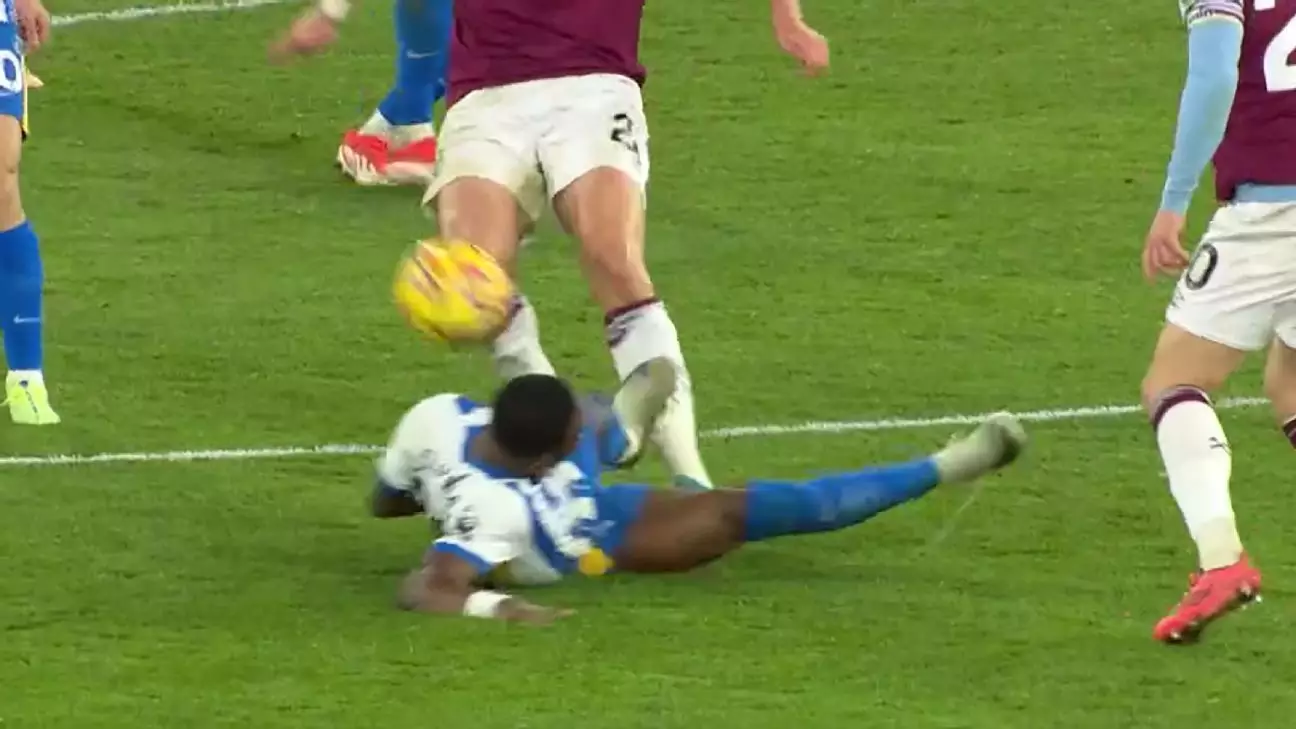The Video Assistant Referee (VAR) system has become a focal point of contention in the English Premier League, stimulating debates among fans, players, and pundits alike. Every weekend produces its own set of incidents, fueling discussions about the soundness of decisions made on the field through technological support. This article serves to dissect some of the more contentious VAR episodes from a recent round of matches, focusing on specific incidents and exploring the broader implications for officiating in English football.
In a recent clash between Brighton & Hove Albion and West Ham, defender Pervis Estupiñán found himself at the center of controversy. The incident unfolded in the 84th minute when Brighton’s Estupiñán challenged Max Kilman, resulting in a foul that earned him only a yellow card. Referee Rob Jones’s initial decision was reviewed by VAR Paul Tierney, who opted not to upgrade it to a red card, igniting heated discussions among fans and analysts alike.
The crux of the debate lies in the interpretation of “serious foul play.” Historical context reveals a troubling pattern; this season alone saw two notable VAR errors involving serious fouls—one related to Manchester United’s Bruno Fernandes and the other concerning Brentford’s Christian Nørgaard. These precedents suggest a concerning trend where VAR might struggle to accurately apply the guidelines for serious foul play. In the case of Estupiñán, despite being airborne during the challenge, many observers argued he endangered Kilman’s safety, warranting a red card under the guidelines of the game. This inconsistency in decision-making highlights the subjective nature of officiating in the modern era.
Another incident that stirred controversy occurred during Chelsea’s clash with Everton, involving goalkeeper Jordan Pickford. As Chelsea launched an offensive, Pickford collided with Chelsea’s Malo Gusto while attempting to defend a set-piece. Referee Chris Kavanagh considered the incident a “normal coming together” and issued a corner kick, which raised eyebrows among experts and fans who believed this warranted a penalty.
When examining this incident through the lens of VAR protocols, it becomes evident that a lack of clarity played a role in the decision. While goalkeepers are typically afforded some latitude in challenging for the ball, Pickford’s aggressive pursuit, which resembled recklessness rather than caution, should have raised concerns. This case bears similarities to a previous incident where Pickford’s challenge on Liverpool’s Virgil van Dijk resulted in severe consequences for the latter’s season. The question arises: why do certain fouls by goalkeepers go unpunished? The near-miss in this scenario prompts a debate about the enforcement of rules across different positions on the field.
The matches saw additional VAR interventions that yielded mixed outcomes. Crystal Palace’s Nathaniel Clyne received only a yellow card for a late tackle on Riccardo Calafiori, a decision that some spectators deemed lenient. Referee Simon Hooper’s judgment was again scrutinized as VAR Michael Salisbury confirmed the call. Though Clyne’s tackle seemed questionable, it did not rise to the level where VAR would intervene, showcasing the fine line VAR officials must tread in determining the threshold for serious fouls.
On a more positive note, AFC Bournemouth’s Antoine Semenyo scored a crucial goal that was reviewed for a potential handball. VAR ruled the goal to stand, confirming the ball’s contact with Semenyo’s arm happened in the course of natural play. Here, the emphasis on a clear and obvious error continued to be a defining feature of VAR’s application. The nuanced rule interpretations surrounding handball decisions complicate the consistency of shackling VAR, requiring an ongoing dialogue about the best processes for achieving fair and equitable officiating.
The persistent debates surrounding VAR interventions in the Premier League have underscored the need for clarity in both rule interpretation and officiating protocols. Stakeholders ranging from players to coaches and fans crave consistency in how fouls and challenges are assessed on the pitch. The variation in outcomes—like those involving Estupiñán, Pickford, Clyne, and Semenyo—illustrates the subjectivity that can arise in refereeing decisions.
As the football community seeks to improve the use of technology in officiating, a concerted effort to enhance decision-making guidelines is imperative. Whether through additional training for VAR officials or more transparent communication from governing bodies, the goal should be to mitigate controversy and restore faith in the officiating process. Ultimately, the integrity of the game depends on reliable, consistent decision-making—an aspiration that remains an ongoing challenge in the world of football.


Leave a Reply